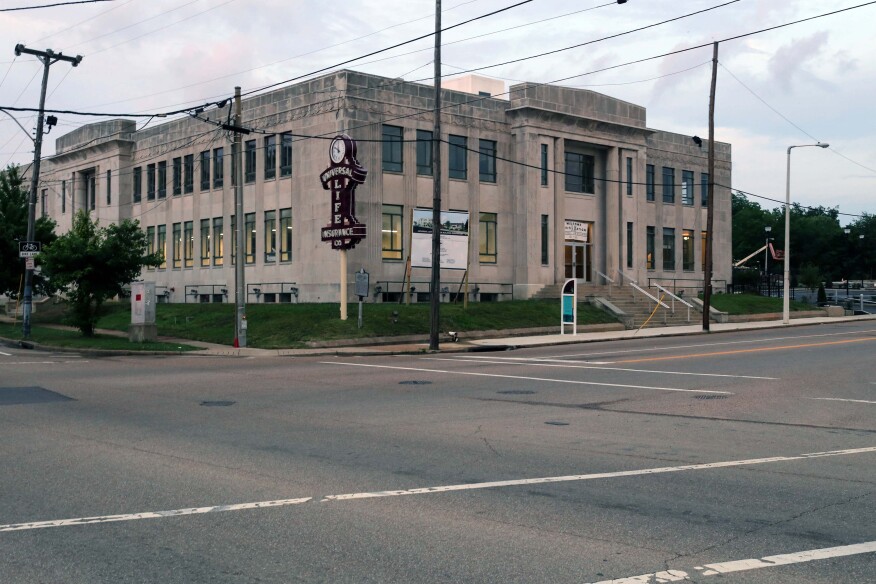Architecture in Limbo
Aaron Betsky on how the COVID-19 pandemic has brought the profession to an apparent standstill.

It is a boring time for architecture. That is not necessarily a bad thing. New buildings that have been recently been announced or have just opened include the elegant (David Adjaye, Hon. FAIA’s proposed addition to the Princeton Art Museum or Diller Scofidio + Renfro’s Rubenstein Forum at the University of Chicago), the head-scratching (OMA’s pixelated block tower in Stockholm, which somehow won this year’s Highrise Award), and the seemingly banal (Berlin’s long-awaited new airport, by Meinhard von Gerkan). All are manipulations of cubic volumes and forms that have the advantage of loosening up the center of the canon, but that do little to respond to larger issues of sustainability, social equity, or the changing place of architecture within our culture. The wave of change that I assume is coming to the profession, not only because of the swell of those crises, but also because of advances in technology and the rise of the next generation of theoreticians, appears still to be a ways off.
Of course, part of this sense of limbo is due to the COVID-19 crisis. Were I to see some of the constructed buildings in person, I might discover qualities in them that can’t be parsed in any of the images, no matter how slick they are. But so far, I see the pandemic leading only to the design of cleaner surfaces and not more experimentation.

It is at the periphery of the profession that the most action appears to be happening now. There are many calls to rethink the education of architects, ranging from proposals to shorten the undergraduate professional curriculum, to various calls to radically revise that curriculum to reflect issues of social equity by addressing systemic racism in the way we learn about and approach architecture. At the School of Architecture + Design at Virginia Tech, where I am the director, assistant professors Nathalie Frankowski and Cruz Garcia of WAI Think Tank have articulated one of the bolder such proposals.
Especially among young designers and architects, the continual pull of other ways of manipulating space continues to grow. Students and even some young professionals are constructing their models in Minecraft and other gaming environments—an ever-growing reliance on virtual reality that other architects would be wise to consider and that may, because of the unequal availability of the technology and the focus on academic pursuits, raise some of the same social equity issues.
Stuck inside our Zoom rooms, some of us long for the celebrated architects mentioned above, who have shown their ability to create environments of great elegance and civic power, to use their talents to redesign our virtual spaces as well. Recent awards in historic preservation, meanwhile, make it clear that architects currently are being called to replicate the mundane, the ordinary, or a vernacular based on a standardized and an oft-repeated set of building practices. The takeaway here is that many older structures and sites might not reflect the discipline’s highest standards of monumentality, but rather are highly significant because of their uses and the history that unfolded there.

The winners of this year's Richard H. Driehaus Foundation National Preservation Awards are not grand artifacts of aesthetic imagination or examples of spatial innovation from decades past, but rather projects like a small box with some neoclassical dressing that houses an important bank serving the Black community in Memphis; a standard-issue and much-added to Colonial structure outside of Boston that is the home to an agency promoting urban farming; and a vaguely Art Deco brick building in Manhattan that is the site of Chelsea District Health Center. None of these buildings are of particular note, nor are the renovations or restorations anything except respectful, but the very act of their reuse and revitalization is of great significance.
I am more focused on these buildings than I am on the faux-vernacular or stripped-down neoclassical buildings that some architects are hawking these days. I am also more interested in them than in the continued search for innovation and new compositions with the tried-and-true forms of minimalist and abstract Modernism. It is the discovery of memory, beauty, and meaning in the existing built landscape, and the use of architecture to unlock the possibilities there, that seems like the true opportunity for the discipline. Whether we find such a field of operation in renovation and restoration, in the design of a virtual realm we have ignored for too long, or in the utilization of our knowledge and skills in the struggle for true sustainability and social equity, these are the projects I hope to explore once the long hiatus of the pandemic comes to a close.
Aaron Betsky is a regularly featured columnist whose views and conclusions are not necessarily those of ARCHITECT magazine nor of the American Institute of Architects.
